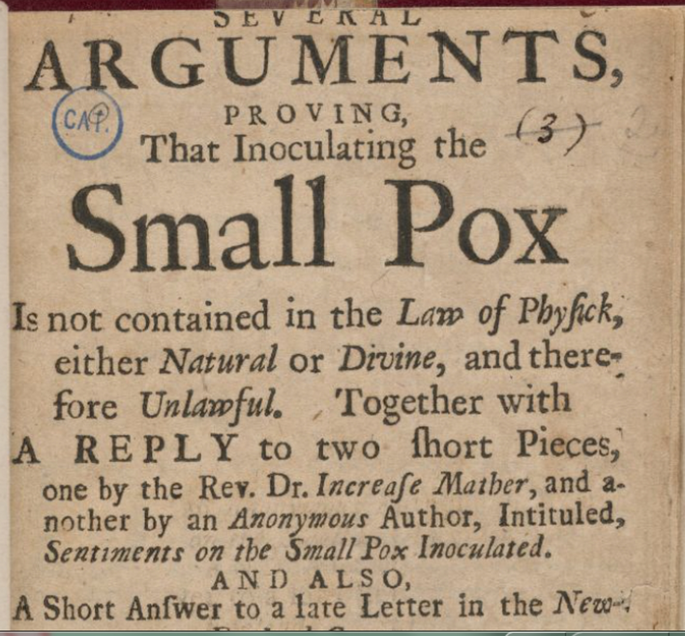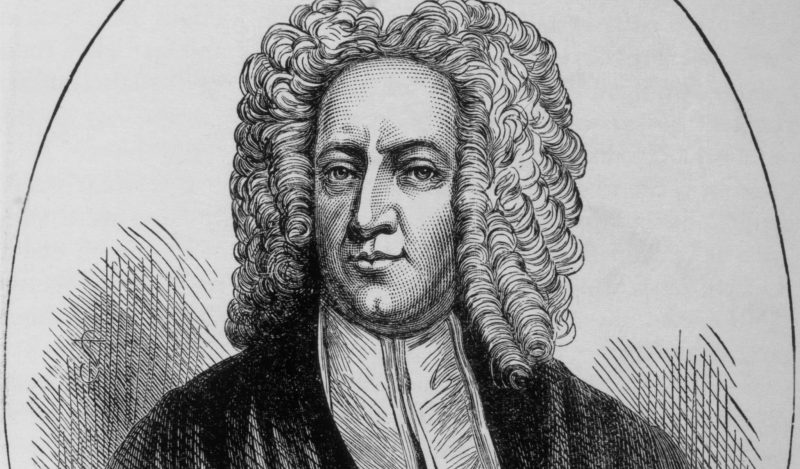Smallpox constituted one of the worst of viral plagues experienced by humanity, and it was indeed a terrible disease for many who contracted it. After an incubation period of 7-19 days, those infected experienced an initial fever accompanied by body aches for another 2-4 days. Sores began to form in the mouth, then spread to the face, extremities, and the whole body within 4 days, and filled with liquid and pus. In people that survived this viral onslaught, their sores began to crust over, forming scabs that could result in scarring for life. It is unknown how many people died of smallpox in the 3,000 years it has likely infected humans, but it has been estimated in the 20th century alone to have killed more than 300 million people.
How do you fight something that terrible and seemingly unstoppable? In hindsight, the answer seems pretty straightforward: Start with a basic knowledge of the principles of immunity. For centuries, people understood that individuals who acquired many diseases become immune to getting them again, but what they didn’t understand is that immunity could be induced in order to protect individuals who never had the disease.
This began to change, possibly in the 16th century, when the technique of variolation, derived from the Latin name for the virus, Variola (meaning “spotted”), began to be adopted in the west (its origin is unknown). With variolation, scabs of smallpox sufferers were ground up and dried, then exposed to naive (i.e. never infected) individuals by rubbing on the skin or by small circular needle perforations on the back of the hand, or in some cases, sniffed into the nose or on cotton placed into one nostril.
Those that received the inoculation mostly experienced a mild form of disease, with a transient fever and a small number of pustules at the site of inoculation, and upon recovery were ‘forever free from fear of contagion’, as Boston minister Cotton Mather wrote around 1714, after being convinced by his African slave, who had been variolated. The procedure was not without risks; variolated individuals were still contagious, and it was estimated that 1-3 out of one hundred died from a more severe form of the disease due to the inoculation. However, this was a substantial improvement over the maximum 30% mortality of natural infection, and the procedure gained acceptance and was employed in England by the early 18th century.
Yet variolation was still treated with suspicion and hostility in much of the rest of Europe, as mentioned by Voltaire in his Philosophical Letters, published in 1734:
“It is inadvertently affirmed in the Christian countries of Europe that the English are fools and madmen. Fools, because they give their children the small-pox to prevent their catching it; and madmen, because they wantonly communicate a certain and dreadful distemper to their children, merely to prevent an uncertain evil. The English, on the other side, call the rest of the Europeans cowardly and unnatural. Cowardly, because they are afraid of putting their children to a little pain; unnatural, because they expose them to die one time or other of the small-pox.”
Voltaire, himself a smallpox survivor and a proponent of variolation, apparently understood the concept of risk, which requires a tradeoff; a larger possibility of illness and death traded for a smaller possibility of illness and death. It seems like an obvious benefit, yet concepts like “giving their children (a disease) to prevent their catching it” would not be supported in today’s safety culture, either, even with conclusive evidence of its efficacy. Thus, it shouldn’t be surprising that many people viewed variolation with great suspicion, especially since they didn’t understand it. In fact no one understood how it worked, but some managed to know and believe that it did.


One of the most fascinating battles between opposing views about variolation occurred during the New England smallpox epidemic of 1721. When a ship brought smallpox to Boston, authorities responded by ordering a cleaning of the streets and isolation of cases.
As the disease spread, guards were ordered for houses where the sick were isolated. But by mid-June of 1721, the city was overwhelmed with cases, and as historians Otho Beall and Richard Shryock wrote in 1954, “…the disease was free to take its natural course.” They concluded, “One has here a nice illustration of the ineffectiveness of isolation procedures as then practiced, once a serious infection had spread beyond a few original foci.” In modern pandemic parlance, there is a point when high disease prevalence makes ‘flattening the curve’ impossible.
To stop the smallpox outbreak and/or to prevent it from returning, the best option was to increase immunity in the population. Yet proponents of variolation encountered fierce resistance. The Reverend Cotton Mather (pictured above) and Dr. Zabdiel Boylston, whom Mather had converted to support the procedure, faced a backlash for their efforts, especially from local physicians (i.e. guys that thought bleeding people relieved them of ‘bad humours’ and cured almost everything) led by Dr. William Douglas. Rev. Mather was shocked by the outrage mob the physicians had helped inflame, “They rave, rail, they blaspheme….And not only (am I) the Physician who began the Experiment but I also am an Object of their Fury.”
Ironically, it was other clergy that came to Mather and Boylston’s defense, against stout opposition from Douglas, the cities’ physicians, and the populace that sided with them. Some physicians had circulated horror stories about variolation in Europe, further terrifying and cowing the public (one can easily imagine them with Twitter accounts, over 100K followers, and recommended as “experts”). By November, popular passions were such that a bomb was thrown into Mather’s home. When the disease continued to spread throughout Boston, Boylston’s inoculations were blamed. Boylston himself calculated that inoculated individuals developed smallpox with one-sixth the frequency of uninoculated individuals. But his opponents, driven by emotion, could not be convinced.
Although the mechanism by which variolation rendered recipients immune to smallpox wasn’t understood, it could still be improved, and that’s precisely what physician-scientist Edward Jenner did in 1796. He had heard from colleagues that once farmers and milkmaids had contracted a milder, non-fatal disease called cowpox from exposure to cattle, they could not get smallpox and displayed no evidence of scarring. In fact, they didn’t even respond to variolation by developing mild sores at the site of inoculation. They seemed protected.
Jenner proposed that, like smallpox, cowpox was also transmissible from human to human. But he had to prove it. In May, 1796, Jenner took material from milkmaid Sarah Nelmes’ cowpox lesions, and used them to inoculate an 8-year old boy named James Phipps. The boy developed a mild fever and lost his appetite, but after nine days, he completely recovered. Two months later, he inoculated James again with matter from a smallpox lesion, and no disease or lesions developed. The boy was protected. Jenner submitted his findings in a paper to the Royal Society in 1797, only to have the paper rejected. He published the paper himself in the next year, including additional cases. He decided to call the new procedure “vaccination”, as the Latin name for cow is “vacca”, and cowpox “vaccinia”. Thus, vaccination and the field of immunology were born.
Unlike variolation earlier in the 18th century, vaccination more quickly became popular and accepted, and Jenner never had to dodge any bombs. It took almost 200 years, yet in 1980, smallpox was declared eradicated by the World Health Organization, after the success of worldwide vaccination efforts, using the very same technique pioneered by Jenner in 1796.
A revised account of the battle over variolation during the Boston epidemic of 1721 was recently published as a history lesson applicable to the COVID-19 pandemic. In the new account, written by surgeon-historian Per-Olaf Hasselgren, fellow surgeon Dr. Zabdiel Boylston is the hero, and the violent opposition to his efforts to introduce variolation was driven by clergy that “thought smallpox was God’s way to punish sinful people.”
However, this contradicts Beall and Shyrock’s account as well as the 1958 article which Hasselgren cites; both are clear that the opposition to Mather and Boylston was led by the physician William Douglas and backed by other Boston physicians. In the ensuing war of words between the two sides, Mather even accused the antivariolaters of antireligious sentiment, further confirming that the opposition was not mainly comprised of rival clergy. Thus, the real history lesson may be the opposite of what was intended by Hasselgren’s article, instead highlighting an example of when the “experts” were disastrously wrong about prevention of a deadly infectious disease.
Further reading:
Cotton Mather: First Significant Figure in American Medicine. 1954. Otho Beall and Richard Shyrock. American Antiquarian.
The Smallpox Inoculation Controversy and the Boston Press. 1721-2. 1958. Laurence Farmer. Bull. NY. Acad. Med.
The Smallpox Epidemics in America in the 1700s and the Role of the Surgeons: Lessons to be Learned During the Global Outbreak of COVID-19. Hasselgren, PO. World J Surg 44, 2837–2841 (2020). https://doi.org/10.1007/s00268-020-05670-4 (Note: this article mentions, yet minimizes the role of physicians in opposition to variolation in the Boston epidemic of 1721, instead claiming other clergy were the most vocal opposition.)
The Mysterious Origins of the Smallpox Vaccine. Katherine Wu. Wired. September 4, 2018.
Viruses, Plagues, and History: Past, Present and Future. Michael B.A. Oldstone. 2009. Oxford University Press.
Drawing: Hand of Sarah Nelmes. William Skelton, 1798.
Republished from the author’s blog.
Join the conversation:


Published under a Creative Commons Attribution 4.0 International License
For reprints, please set the canonical link back to the original Brownstone Institute Article and Author.









